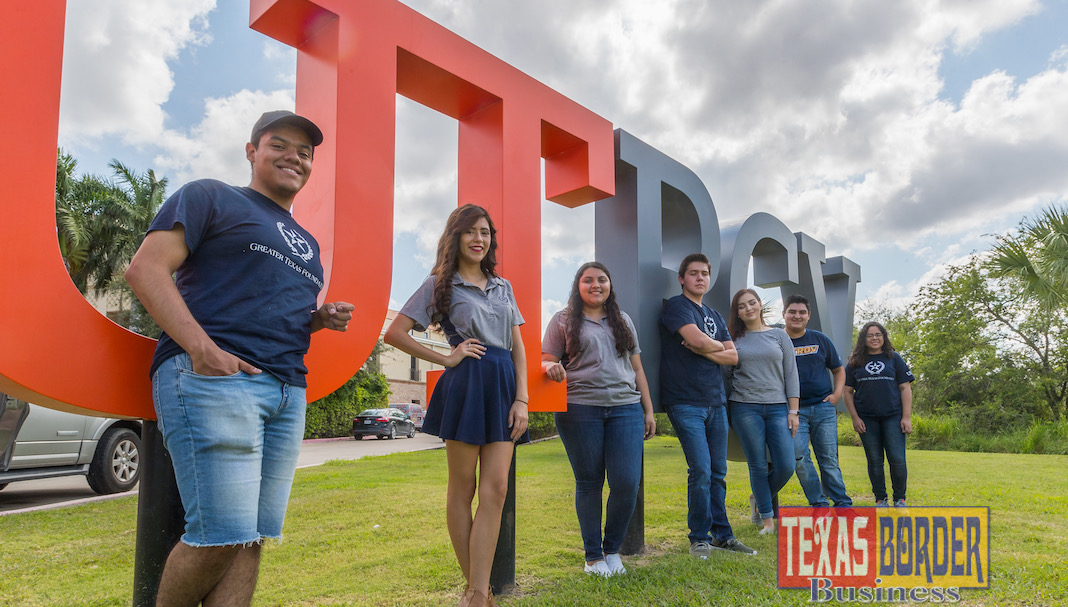
Texas Border Business
By Amanda L. Alaniz
Rio Grande Valley, Texas – The University of Texas Rio Grande Valley Dual Enrollment Program is reporting a bump in the number of students earning college credit.
Statistics show that during UTRGV’s fall 2017 semester, 576 students were enrolled in the program; at the start of the fall 2018 semester, 722 students were enrolled, an increase of about 25 percent.
In dual credit programs, high school juniors and seniors can enroll in college courses and receive both high school and college credits. UTRGV currently partners with 26 Valley districts to help students receive college credit.
The University of Texas System recently researched the impacts of dual credit programs, such as graduation rates and student debt, and the pros and cons of dual credit from student and faculty perspectives, and found that a student’s exposure to one dual credit course can have a significant impact on academic success.
Michael Aldape, UTRGV director of Special Programs overseeing the Dual Enrollment Program, said qualifying high school students are able to take courses in the UTRGV core curriculum, such as English 1301, College Algebra, and Political Science 2305.
UTRGV does not charge high school students to take dual enrollment courses.
To get students involved with the program, UTRGV representatives consult with school counselors and district administrators about establishing a Memorandum of Understanding (MOU) to review the program’s workings and assisting the students.
“Once a student is cleared for admissions – after filling out the application and filing the proper documentation – they’re invited to an on-campus advisement session, where they learn more about how they can be successful in the program,” Aldape said. “We give them tools, tips, and strategies for making the most of their time in their courses.”
Cindy Valdez, UTRGV associate vice president for Student Educational Outreach, said her department works to distribute vital information about the program to high schools, parents and students. They also address any misunderstandings, as the classes students can take are applicable to most degree plans but there can be some confusion, at times.
“Parents want their children to get as much credit as possible, but it’s really not about how many hours you can get. It’s knowing those courses that you’re taking are actually going to be applied to your degree once you get into a university,” Valdez said. “Sometimes, parents and students come in asking about how some career and technical courses will apply to the degree at UTRGV, and, well, they won’t. But if the student is working toward an associate degree at a community college, they may apply.”
Valdez and Aldape said they’re in the process of redefining how they communicate with parents and students about the program, to reassure that they are clear on how dual credit works. They’re working to revamp their website and regularly visit campuses to talk with families about the program’s benefits.
One of the common associations with dual credit is that it can save students money once they get to a university. Students graduate, on average, within three years of entering the university with about 60 hours completed, Aldape said. It does depend on the degree plan and the actual student, especially if they choose to grow their college experience.
“We’ve seen students themselves self-identify: ‘I don’t want to graduate now. I want to take my time. I actually want to explore. I want to be involved with extracurricular activities.’ We work with them to make those intentional choices. That way, they get the full experience they want,” he said.
The Dual Enrollment Department works with students individually, helping them seek a variety of opportunities to make the most of their college career.
‘ONE OF THE BEST DECISIONS I’VE MADE’
Magdalena McKula, a recent UTRGV psychology graduate and former Greater Texas Foundation Scholar, attended Brownsville Early College High School and participated in the Dual Enrollment Program.
She was able to take more than a dozen college courses – all free of charge – while she was still in high school.
Taking part in the program helped her prepare for college, she said, provided opportunities for scholarships, and challenged her academically.
“It was one of the best decisions I made,” McKula said.
“Initially, I struggled as I transitioned from high school to college courses, as I was a student who didn’t have to study to do well in high school. But, college was a wakeup call, and I did poorly academically my first two semesters. I had to learn study strategies in order to succeed academically. After that, I was on the Dean’s List and President’s List for the rest of my college career,” she said.
McKula said students interested in participating in Dual Enrollment should be prepared to work hard, ask questions, take notes, and not procrastinate.
“And don’t give up,” she said. “This is one of the greatest investments you can make for your future.”
Anyone interested in learning more about the Dual Enrollment Program or the Greater Texas Foundation Scholars Program at UTRGV can contact Aldape at (956) 882-7732 or michael.aldape@utrgv.edu.
ABOUT UTRGV
The University of Texas Rio Grande Valley (UTRGV) was created by the Texas Legislature in 2013 as the first major public university of the 21st century in Texas. This transformative initiative provided the opportunity to expand educational opportunities in the Rio Grande Valley, including a new School of Medicine, and made it possible for residents of the region to benefit from the Permanent University Fund – a public endowment contributing support to the University of Texas System and other institutions.
UTRGV has campuses and off-campus research and teaching sites throughout the Rio Grande Valley including in Boca Chica Beach, Brownsville (formerly The University of Texas at Brownsville campus), Edinburg (formerly The University of Texas-Pan American campus), Harlingen, McAllen, Port Isabel, Rio Grande City, and South Padre Island. UTRGV, a comprehensive academic institution, enrolled its first class in the fall of 2015, and the School of Medicine welcomed its first class in the summer of 2016.











